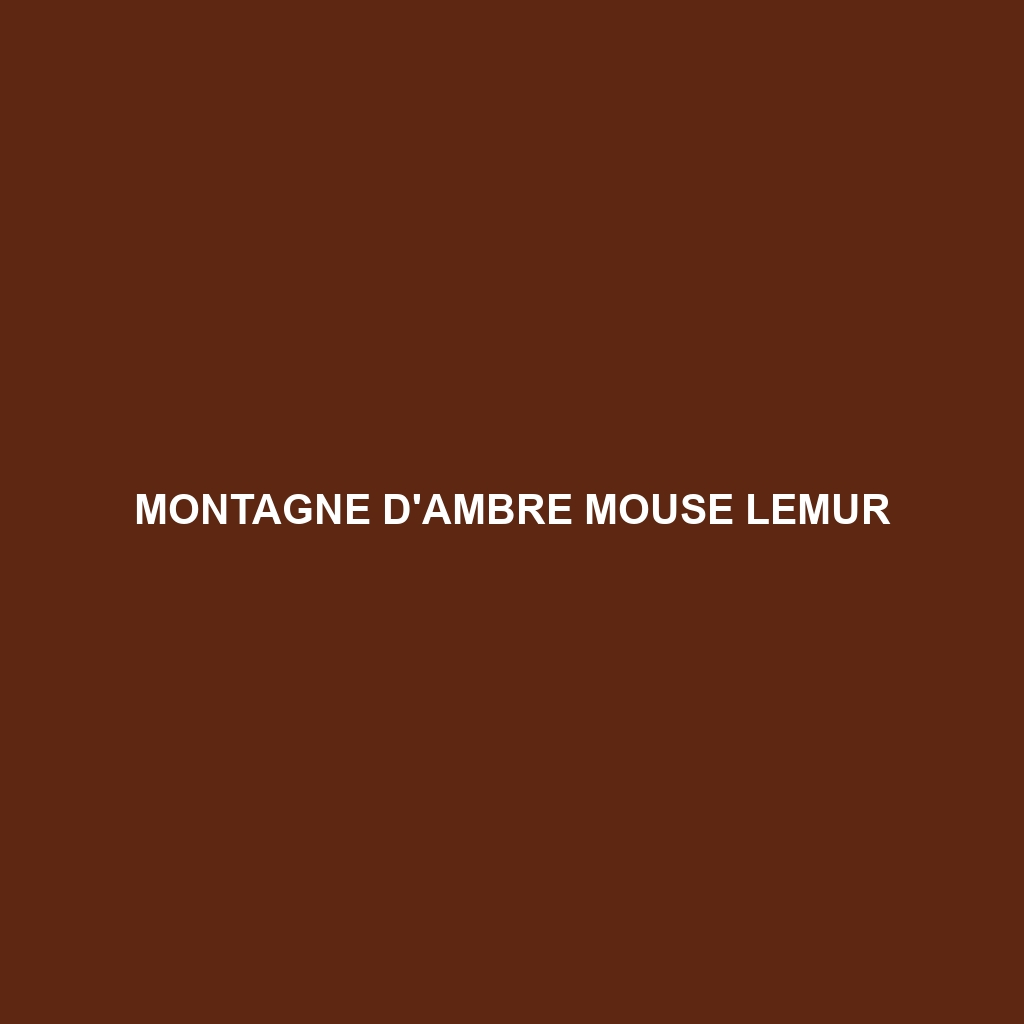Montagne d’Ambre Mouse Lemur Species Description
Common Name: Montagne d’Ambre Mouse Lemur
Scientific Name: Microcebus ravelobensis
Habitat:
The Montagne d’Ambre Mouse Lemur is primarily found in the lush montane forests of Madagascar, specifically within the Montagne d’Ambre National Park. This unique species thrives in humid, tropical environments characterized by dense vegetation and diverse flora. The geographical range of this mouse lemur is limited to the northern region of Madagascar, making it particularly susceptible to habitat loss due to deforestation and human encroachment.
Physical Characteristics:
The Montagne d’Ambre Mouse Lemur typically measures around 8 to 10 centimeters in body length, with a tail that is often longer than its body. Its fur is predominantly gray-brown with a lighter ventral side, providing excellent camouflage in the forest undergrowth. This species exhibits large, expressive eyes that are adapted for nocturnal vision and possesses a distinctive round face. Notable characteristics include its pointed snout and relatively large ears, which enhance its auditory senses, crucial for survival in its natural habitat.
Behavior:
These small primates are primarily nocturnal, engaging in most of their activities at night. They are arboreal, spending a significant amount of time in trees, where they display agile climbing abilities. The Montagne d’Ambre Mouse Lemur is known for its social behavior; it often lives in small family groups, which helps in foraging and predator avoidance. Vocalizations play an important role in their communication, with various calls utilized to express different social interactions.
Diet:
The diet of the Montagne d’Ambre Mouse Lemur mainly consists of fruits, flowers, and insects, making it an omnivorous species. They particularly favor ripe fruits and small invertebrates, which are abundant in their forest habitats. This feeding behavior not only supports their nutritional needs but also aids in seed dispersal, playing a critical role in maintaining the health of their ecosystem. Their foraging habits typically involve extensive searching during the hours of darkness, utilizing their keen sense of smell to locate food.
Reproduction:
Montagne d’Ambre Mouse Lemurs breed seasonally, with mating occurring between September and November. Typically, females give birth to one or two offspring after a gestation period of about 60 days. The young are born relatively undeveloped and cling to their mother’s belly for safety and warmth. Notably, maternal care is paramount, as mothers are highly attentive, nursing and grooming their young until they are capable of independent survival.
Conservation Status:
The Montagne d’Ambre Mouse Lemur is currently listed as ‘Endangered’ on the IUCN Red List. The primary threats to their survival include habitat destruction due to logging and agricultural expansion. Conservation efforts are being made to protect their natural habitat, but ongoing human activities pose a significant challenge to their populations.
Interesting Facts:
– The Montagne d’Ambre Mouse Lemur is one of the smallest primates in the world, making it a fascinating subject for researchers studying primate evolution and biodiversity.
– These lemurs have a unique adaptation to their nocturnal lifestyle, which includes excellent night vision due to their large eyes, allowing them to navigate and forage with ease in low-light conditions.
Role in Ecosystem:
As a vital component of Madagascar’s ecosystem, the Montagne d’Ambre Mouse Lemur plays an essential role in seed dispersal, which contributes to forest regeneration and biodiversity. By consuming fruits and then excreting the seeds, they facilitate the growth of new plants. Additionally, they serve as prey for larger predators, helping maintain the balance within their habitat’s food web. Their interactions with other species further underscore the interconnectedness of the ecosystem they inhabit.
